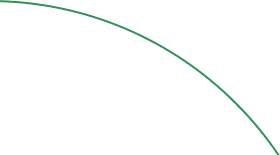🎯 What does this mean?
An elliptic paraboloid is a three-dimensional bowl-shaped surface that curves upward in all directions
from its vertex. It has elliptical cross-sections parallel to the base and parabolic cross-sections
through the vertex in any vertical plane.
🎯 Geometric Interpretation
An elliptic paraboloid is a three-dimensional surface that curves upward (or downward) from a single
vertex point. Every horizontal cross-section is an ellipse that grows larger as you move away from the
vertex, while every vertical cross-section through the vertex is a parabola.
\[ a \]
Scale parameter in x-direction - controls the rate of curvature along
x-axis
\[ b \]
Scale parameter in y-direction - controls the rate of curvature along
y-axis
\[ c \]
Scale parameter in z-direction - controls overall vertical scaling of
the surface
\[ (h, k, l) \]
Vertex coordinates - the point of minimum (or maximum) value on the
surface
\[ u \]
Radial parameter in parametric form - controls distance from the
central axis
\[ \theta \]
Angular parameter - determines position around elliptical
cross-sections
\[ \text{Vertex} \]
Point where the surface reaches its minimum (for upward opening) or
maximum value
\[ \text{Axis} \]
Line of symmetry passing through the vertex, typically aligned with a
coordinate axis
\[ \text{Focus} \]
For circular paraboloids, the point where parallel rays reflect and
converge
\[ \text{Directrix} \]
Reference plane used in the geometric definition of the paraboloid
\[ \nabla F \]
Gradient vector - gives normal direction to the surface at any point
\[ \text{Elliptical Sections} \]
Cross-sections parallel to the base - ellipses that grow larger away
from vertex
🎯 Essential Insight: An elliptic paraboloid is like a 3D bowl that curves upward in all
directions - every horizontal slice is an ellipse and every vertical slice through the center is a parabola!
📊
🚀 Real-World Applications
📡 Telecommunications & Astronomy
Satellite Dishes & Radio Telescopes
Parabolic reflectors focus parallel radio waves to a single point, enabling long-distance
communication and deep space observation
🏗️ Architecture & Engineering
Roof Design & Structural Analysis
Paraboloid roofs provide elegant curves while efficiently distributing loads, seen in modern
stadiums and convention centers
🔬 Optics & Physics
Mirrors & Light Focusing
Parabolic mirrors in telescopes, headlights, and solar concentrators use the focusing property to
collect and direct light
📊 Mathematics & Optimization
Minimization Problems & Calculus
Paraboloids represent quadratic functions in multiple variables, fundamental in optimization
theory and machine learning
The Magic: Telecommunications: Radio wave focusing in dishes,
Architecture: Elegant curved roofing structures, Optics: Light
concentration in mirrors, Mathematics: Optimization and minimization problems
Before memorizing equations, develop this core intuition about elliptic paraboloids:
Key Insight: An elliptic paraboloid is like a 3D bowl that gets wider as you go up
- imagine a mixing bowl where every horizontal slice is an oval and every vertical slice through the
center is a U-shaped curve!
💡 Why this matters:
🔋 Real-World Power:
- Engineering: Satellite dishes and radio telescopes use
parabolic focusing properties
- Architecture: Curved roofs and domes utilize paraboloid
geometry for strength and beauty
- Optics: Parabolic mirrors focus light in telescopes and
solar concentrators
- Mathematics: Optimization problems often involve finding
minima of paraboloid surfaces
🧠 Mathematical Insight:
- Paraboloids are quadric surfaces defined by second-degree equations
- Cross-sections reveal the dual nature: elliptical horizontally, parabolic vertically
- Gradient vectors provide normal directions for tangent plane calculations
🚀 Study Strategy:
1
Visualize the Basic Shape 📐
- Start with equation: z = x²/a² + y²/b²
- Picture: Bowl opening upward from vertex at origin
- Key insight: "How does the bowl widen as height increases?"
2
Understand Cross-Sections 📋
- Horizontal cuts (z = constant): Ellipses with size proportional to √z
- Vertical cuts through axis: Parabolas opening upward
- At vertex (z = 0): Single point where the bowl reaches its minimum
3
Master Parametric Form 🔗
- x = a√u cos(θ), y = b√u sin(θ), z = u
- u controls height and ellipse size, θ controls angular position
- Shows paraboloid as expanding elliptical levels
4
Connect to Applications 🎯
- Focusing: Parallel rays reflect to converge at the focus point
- Optimization: Minimum points correspond to optimal solutions
- Architecture: Structural efficiency in curved roof designs
When you see elliptic paraboloids as "expanding elliptical bowls," analytic geometry becomes a
powerful tool for understanding focusing systems, architectural curves, and optimization problems in
engineering and science!
Memory Trick: "Every Level Lives Like Expanding Bowls" - VERTEX: Minimum
point of the bowl, ELLIPSE: Shape of horizontal cross-sections, PARABOLA:
Shape of vertical cross-sections
🔑 Key Properties of Elliptic Paraboloids
📐
Quadric Surface
Defined by second-degree polynomial equation in three variables
Has exactly one vertex point where the surface reaches its extremum
📈
Focusing Property
For circular paraboloids, parallel rays reflect through a single focus point
Fundamental principle behind parabolic mirrors and satellite dishes
🔗
Convex Surface
Bowl-shaped surface that curves upward (or downward) from the vertex
All tangent planes lie below (or above) the surface
🎯
Optimization Applications
Represents quadratic functions in multivariable calculus
Vertex corresponds to global minimum (or maximum) in optimization problems
Universal Insight: Elliptic paraboloids are nature's solution for focusing and optimization
- they show how mathematical curves create practical focusing systems and represent optimal solutions!
Standard Form: z = x²/a² + y²/b² defines the basic upward-opening elliptic paraboloid
Cross-Sections: Horizontal cuts give ellipses, vertical cuts through vertex give parabolas
Parametric Form: Shows paraboloid as expanding elliptical levels with increasing height
Applications: Satellite dishes, telescopes, architectural roofs, and optimization problems



